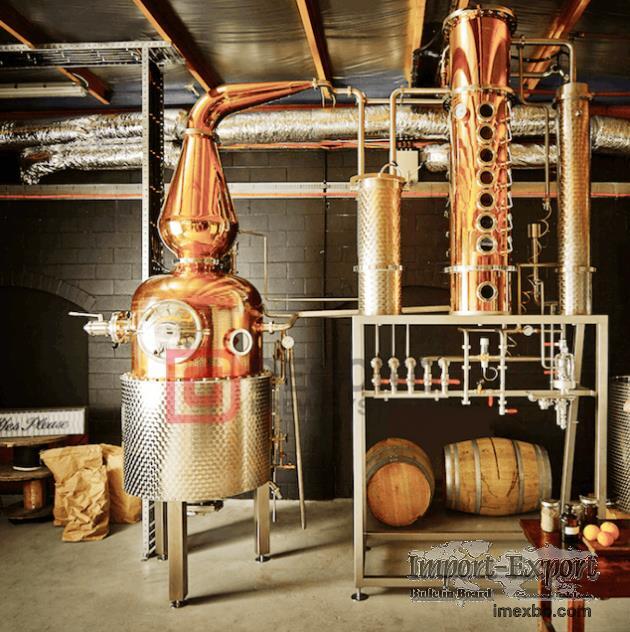 |
Home > Offers to Sell > Industrial Machinery & Equipment
| Contact: | Kate James |
|---|---|
| Company: | DEGONG equipment |
| Huashan Street, Licheng District, Jinan City, Shandong Province | |
| Jinan City 250000 | |
| China | |
| Phone: | 86 18764478001 |
| E-Mail: | |
| Date/Time: | 1/5/22 6:20 GMT |
1000L Whiskey Brandy Gin Micro Alcohol Copper Distiller
Distillation has a long and glorious history, in fact it can be said to be
paving gold! There is evidence that the Babylonians had a rough understanding
of the distillation process more than 3,000 years ago, and they did not keep
secrets. By the 1st century BC, ancient civilizations in China, Pakistan, and
Europe were being perfected, including the ancient Romans. Thanks to alchemy,
the science of distillation has been further developed. This discipline,
somewhere between science and mysticism, is entirely concerned with turning
materials into gold.
Advanced technology enabled the distillation of later spirits. The first book
on distillation was published by the Germans in 1500, but at that time this
process was used to make perfume or medicine. Only 100 years later, people
began to pay attention to the idea of drinking for pleasure. However, in the
19th century, modern forms of distillation were born!
Step 1: Obtain your device
The distiller works on the distiller and can be a tank distiller (the oldest
distiller type) or a column distiller. This is a complicated machine with the
columns extending all the way to the ceiling. The distiller is connected to the
condenser (the container through which the cooling water passes), and the
condenser is connected to the barrel to collect the finished distillate.
Step 2: Clean the distiller
Your distiller must be cleaned thoroughly before each distillation. After all,
you don't want the dirt from the last distillation to mess up your gin!
Step 3: Add alcohol and botanicals
There are many unique distillation techniques, usually developed by the
distiller after months and years of experimentation. But the basic principle
remains the same: first add vegetable and alkaline alcohol (also called
"neutral alcohol") to the still. This spirit is a fermented alcohol, usually
made from grains without added flavors. It is a mixture of water and pure
alcohol.
Step 4: Heating
The heat source-some distillers use an open flame, while others use a furnace
or electric heat source-start heating the bottom of the distiller. Alcohol
starts to boil at 73 degrees Celsius, while water does not boil until it
reaches 100 degrees Celsius. This means that the alcohol in the neutral spirits
will turn into gas and start to rise, while most of the water will stay at the
bottom of the still.
Step 5: Cool down and capture
As a gas, the alcohol passes upward through the distillation head, tank top, or
distillation tower. It then passes through a condenser filled with cold water,
where it cools and turns back into liquid. The final distillate drips into the
barrel, where the distiller can decide whether to keep it or return it to the
distiller for a second round of distillation to become a higher concentration
of water and alcohol solution.
Contact us
A wide range of models can meet the various requirements of each market and
ensure that you can always find a solution that suits you. If you want to know
more detailed information about our equipment, please contact us.
Minimum Order: 1 sets
SOURCE: Import-Export Bulletin Board (https://www.imexbb.com/)
Similar Products:Not exactly what you are looking for? Post an Offer to Buy!
![]()
© 1996-2010 IMEXBB.com. All rights reserved.
|
|
|






